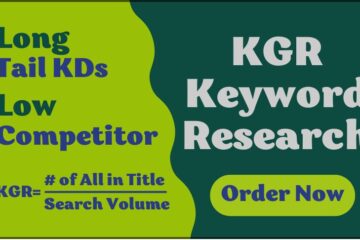In a nutshell, onpage SEO is optimizing the internal aspects of a website, that is, sorting according to search engine rules so that the user likes your site and visits your site again to find out any information. Among SEO, onpage SEO is very important and plays an effective role in getting the desired results. You can even inform search engines about your website or webpage through onpage SEO, and the search engines get a full idea of which keywords you have chosen for which page.
What is onpage SEO?
An example can be given in detail about onpage SEO, for example you have a store (website), and there are many different products, Now what will be the design of the store, what will be the color, (site’s UX, UI) where any kind of product will easily attract the attention of the customer.(Content provided within a page and beautifully arranged), a very short description about the quality of the product, giving instructions on various topics through different signs. The sum of these things is called onpage SEO. Onpage SEO of a website is based on certain topics.
What are the onpage SEO metrics?
Title: Page, post or category title should be meaningful. It’s better not to have too many titles, too few, too many titles. In some cases, however, small may be large or medium. However, care should be taken not to do so too much.
URL structure: The shorter the URL length of a page, post, and category, the better. The best way is to keep your selected keywords as URLs and not use underscores or numbers in the URLs. The URL structure should be the domain / post or page or category name.
Heading tags: Heading tags play a very useful role for a website. Search engines can tell which part of a web page is more important by the heading tag. Heading tags are basically (h1 – h6). The title must be h1. The main keywords selected will be the h2 tag and the other points or important points will be the h3 tag. The rest of the parts should be arranged in this way. However, anyone can use only h1-h3 or h4 tags if they want.
Content length: Whether the content is Bengali or English, the minimum should be 500 words, but depending on the content, it depends on the number of words. In many cases it can be up to 300 words. But when you write about a topic, be sure to note how many words your competitors have written. Do a Google search with your chosen keyword to see the average content length of 10 sites on the first page and write the minimum word content. It is better to write a little more than the average content word of 10 people on the first page. But in that case you have to keep an eye on the quality. Make sure that only the length does not increase. In addition to the word, the quality should be good.
Use of keywords: Be careful not to over-optimize the use of keywords in the content. In my opinion the use of keywords should not be above 1%. There are many tools that suggest up to 2.5% and keyword usage. But try, the less you use the main keyword, the better. I would suggest that the usage of the main keyboard should be 0.5%. This means that you can use the main keyboard 5 times in every 1000 word content. In some cases, you can use a little more, but keep in the mind so that it does not go above 1%. At this the quality is lost.
Use of LSI and Long tail keywords: Remaining % of LSI and Long tail keywords used. That is if you. 0.7% use keywords, the remaining 0.3% will be LSI (Latent semantic indexing) and long tail keywords. This means that the main keyword density will depend on how many LSI and long tail keywords you can use.
Keyword stuffing: Keyword stuffing and keyword density are two different things, but many people confuse them together. When writing content and before publishing, make sure there is no keyword stuffing. This is because Google identifies articles with keyword stuffing as low-quality articles. Keyword density is a measure of how many% of the main keywords you have used and keyword stuffing is the amount of keywords you have used unnecessarily. This means that if your keyword density is 0.6%, it can be keyword stuffing. For example, the keyword density in your article is 0.5% but you have used 2 or more keywords in a paragraph of 100 words.
Use of internal links: Internal links are links to one page of your website, from post to another, through post links. Internal links play an important role in keeping visitors active on a website for a long time, even helping them to be indexed faster in search engines. There are some differences in the use of internal links. Many people use internal links from 1-10 p.m. If the content length is longer, you can use internal links as needed. However, I suggest that it is better not to use internal links more than 3-5 times.
Use of External Links: External links are links from your page, posts to other relevant and authoritative websites. The advantage of external links is that it helps the visitor to provide complete information and gives an informative idea about the website to the search engines. External links I suggest using at least once, but you can use enough external links as needed on the page and post.
Image Optimization: Image optimization is an important step in on-page SEO. One image plays more than a minimum of 300 words of text content. You have to write the content of many words to give the visitors an idea through an image. Then you can understand the importance of the image. Image optimization can be done in a very short range, for example, the image must be unique, the image’s title and inverted text must be used, the title and inverted text must be selected by you, image description must be used, image captions must be used, and above all the image must be noted. Not more than 60 kilobytes, it can increase the site loading speed. Which annoys the visitor.
Meta description: Meta description is not a direct ranking factor of search engines but it is not less important than meta titles. In my opinion, a ranking factor of meta description and search engine, such as when searching in search engine with a keyword, the search engine results page shows the keywords in the list in bold Google. The best rule for writing a meta description is that the meta description should be within 155 characters and should not exceed 920 pixels.


0 Comments